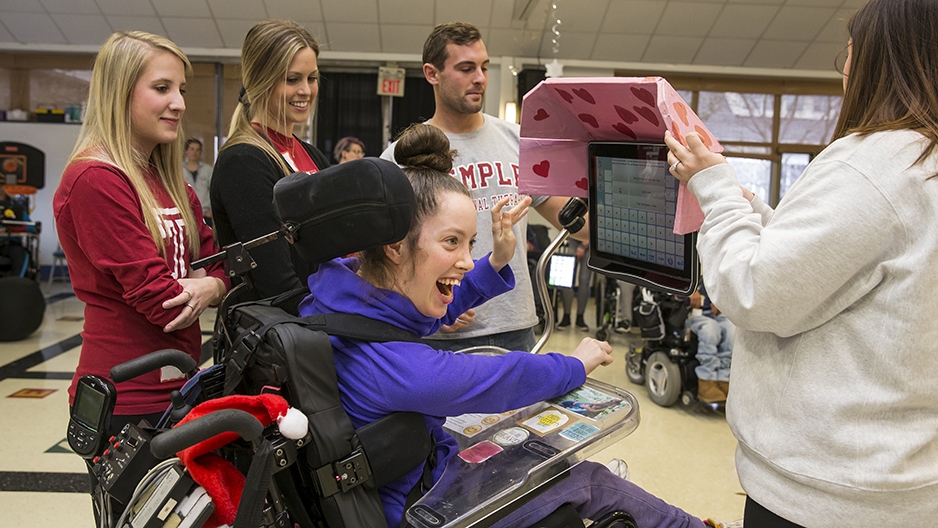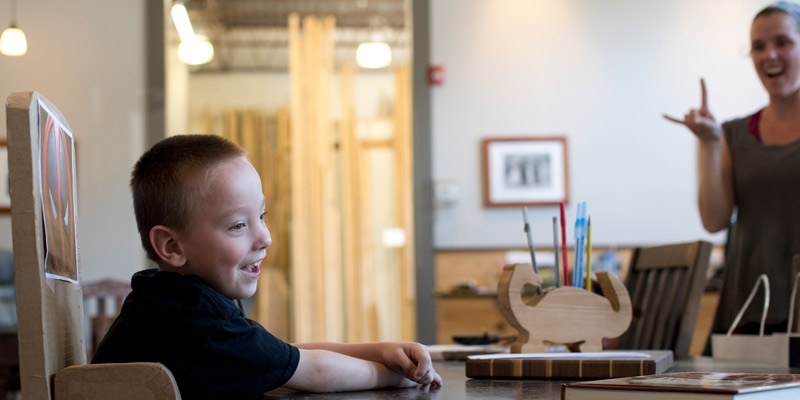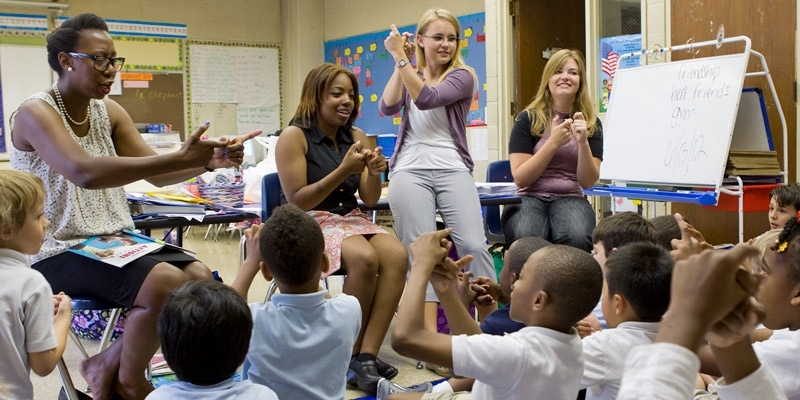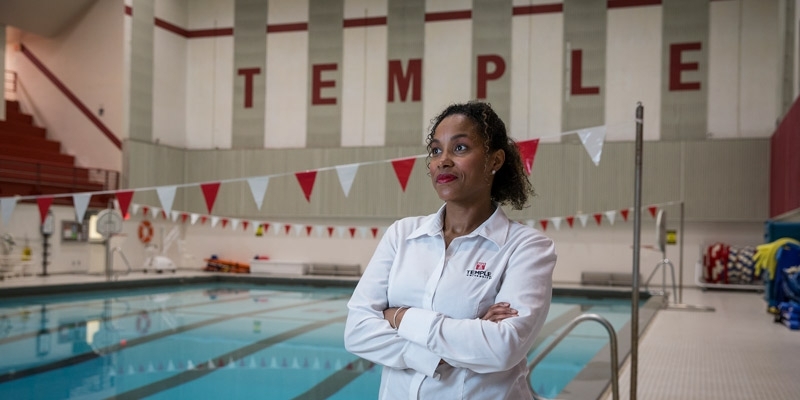From cardboard comes possibilities
Temple’s Adaptive Design Greater Philadelphia presented custom-made adaptations to children with cerebral palsy last week.

For Diana “D” Rich, a 19-year-old from Massachusetts who has cerebral palsy, the sun can really cloud her ability to communicate: Its glare makes it nearly impossible for her to use her eye-tracking communication assistance device outdoors, limiting her ability to select letters and words with sight.
“Communication is so integrated into D’s lifestyle—it bothers me almost as much as it does D when she can’t communicate,” said Kevin Rafferty, her teacher at HMS School for Children with Cerebral Palsy in West Philadelphia.
The solution, it turned out, was in some cardboard.
On Friday, students from Temple University’s Occupational Therapy program presented D with a customized, fitted adaptation, fashioned out of light but durable cardboard, that rests on her device—a pink visor of sorts decorated with hearts and emblazoned with her initial.
The fitting was one of a dozen presented to HMS students by Adaptive Design Greater Philadelphia, a program of Temple’s Institute on Disabilities, which is housed in the College of Education. The effort to provide children with practical solutions made from three-ply cardboard is a joint one that has involved work by students across disciplines—occupational therapy, architecture and art.
The adaptations, created with the exact specifications and needs for each recipient, can help young people more fully accomplish routine tasks or partake in social activities. Two students received boxes (one of which was painted with elf feet) that attach to their motorized wheelchairs so they can play soccer. Another received a tray custom fit to her bed so she can continue to use her devices, such as a joystick, there.
“It was just a really cool project to do assistive technology,” said second-year occupational therapy student Ozzie Moyer, whose team built D’s visor adaptation. He noted that the affordable materials and time to build the adaptations wasn’t overly burdensome. “But it can help the students do so many more functional activities.”
Likewise, Susan Santalucia, an assistant professor of occupational therapy who led a course in which students built the adaptations, said they “truly have the potential to change the lives of children with disabilities.”
The HMS School serves students ages 5 through 21 and currently has nearly 60 students enrolled.
Russell Goldstein, project manager for Adaptive Design Greater Philadelphia, told 6ABC in an interview that the creations help curb expenses for the recipients and their families.
“It’s incredibly important because a lot the children we’ve served to date are inundated with different expenses for all of the other equipment they may be getting,” he said.
A $75,000 Reeve Foundation grant helped make the program possible by bringing Alex Truesdell—the founder of the Adaptive Design Association who has led efforts to create cardboard adaptations for children—to Philadelphia earlier this year to train professionals in fitting and designing the devices.
In a short time, the effort has provided simple but life-changing solutions.
That wasn’t lost on D.
“The sunblocker will let me use my device outside,” D said matter-of-factly, smiling as the room broke into applause.


